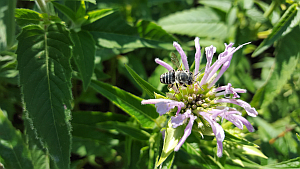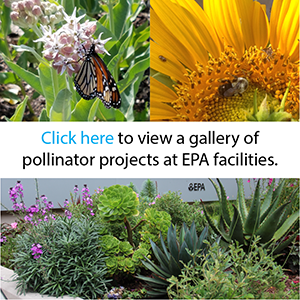Pollinator Protection at EPA

Over the past several years, the population of important pollinators has declined in the United States and internationally. Pollinators play a key role in agriculture, since the majority of native plants require pollination by bees or other pollinating animals.
To address the threat of diminishing pollinator populations, the White House issued a memorandum in 2014 establishing a Pollinator Task Force that developed the National Strategy to Promote the Health of Honey Bees and Other Pollinators. This strategy aims to reverse the declining pollinator populations through actions by federal departments and agencies.
EPA has launched a Pollinator Protection Initiative and is conducting pollinator site assessments to promote pollinator communities and habitats at its facilities. In order to establish a comprehensive pollinator baseline, these site assessments:
- Inventory flora types
- Identify observed pollinator species
- Review landscaping practices
The pollinator baseline will be used to shape landscaping decisions that will protect and expand pollinator communities at EPA facilities.
Protecting pollinators can be easy. Below are activities that the EPA is undertaking to protect pollinators, but you can also try them at home.
- Think locally. Incorporate native species of flowering plants suitable for local climate and region to attract and benefit local pollinators. Use the Pollinator Partnership’s Ecoregional Planting Guides Exitor download the National Wildlife Federation’s Native Plant Finder Exitto get started.
- Cut down on cutting. Reduce mowing and allow flowering groundcover to remain in the lawn as forage for pollinators.
- Leave these for the bees. Leave plant stalks and other organic materials in place during fall garden maintenance; wait to conduct outdoor spring cleanup until after pollinators appear.
Here are two resources to help you promote pollinators at home:

